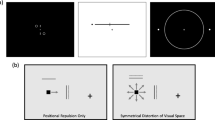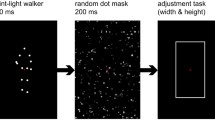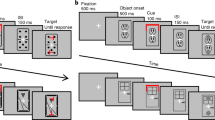Abstract
The perceived size of a fixated object is known to be a function of the perceived fixation distance. The size-distance paradox has been posited as evidence that the perceived distance of a fixated object is, in turn, influenced by the object’s perceived size. If this is correct then it challenges a widely accepted account (modified weak fusion) of how the nervous system combines multiple sources of information. We hypothesised that the influence of perceived size on the perception of distance is likely to be restricted to conscious perceptual judgements. If our hypothesis is correct then the size-distance paradox should not be observed when observers make action-based distance judgements. In line with this expectation we observed the size-distance paradox when participants made verbal reports on target distance but found no paradoxical judgements in a group who were asked to point at the target. We therefore suggest that the size-distance paradox should not be taken as evidence that perceived size feeds back into distance perception.
Similar content being viewed by others
Author information
Authors and Affiliations
Additional information
Received: 4 December 1998 / Accepted: 16 February 1999
Rights and permissions
About this article
Cite this article
Mon-Williams, M., Tresilian, J. The size-distance paradox is a cognitive phenomenon. Exp Brain Res 126, 578–582 (1999). https://doi.org/10.1007/s002210050766
Issue Date:
DOI: https://doi.org/10.1007/s002210050766




